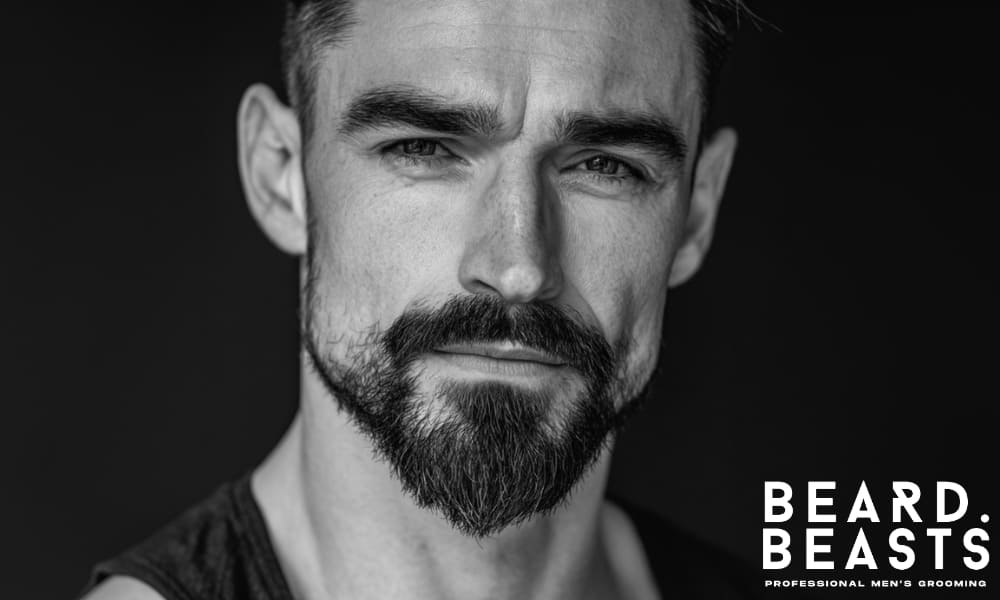Ready to upgrade your look with the best beard style for 2025? This comprehensive guide unveils the hottest beard trends of the upcoming year, providing expert advice on finding a style that complements your face shape, personality, and lifestyle.
From classic looks to modern interpretations, we’ll help you discover the ideal beard to express your unique style.
The Best Beard Styles for 2025
Finding the right beard style can significantly enhance your appearance. This guide showcases a variety of styles, from classic to contemporary, with practical advice to help you choose the best fit for your face shape and personal style.
The Classic Full Beard
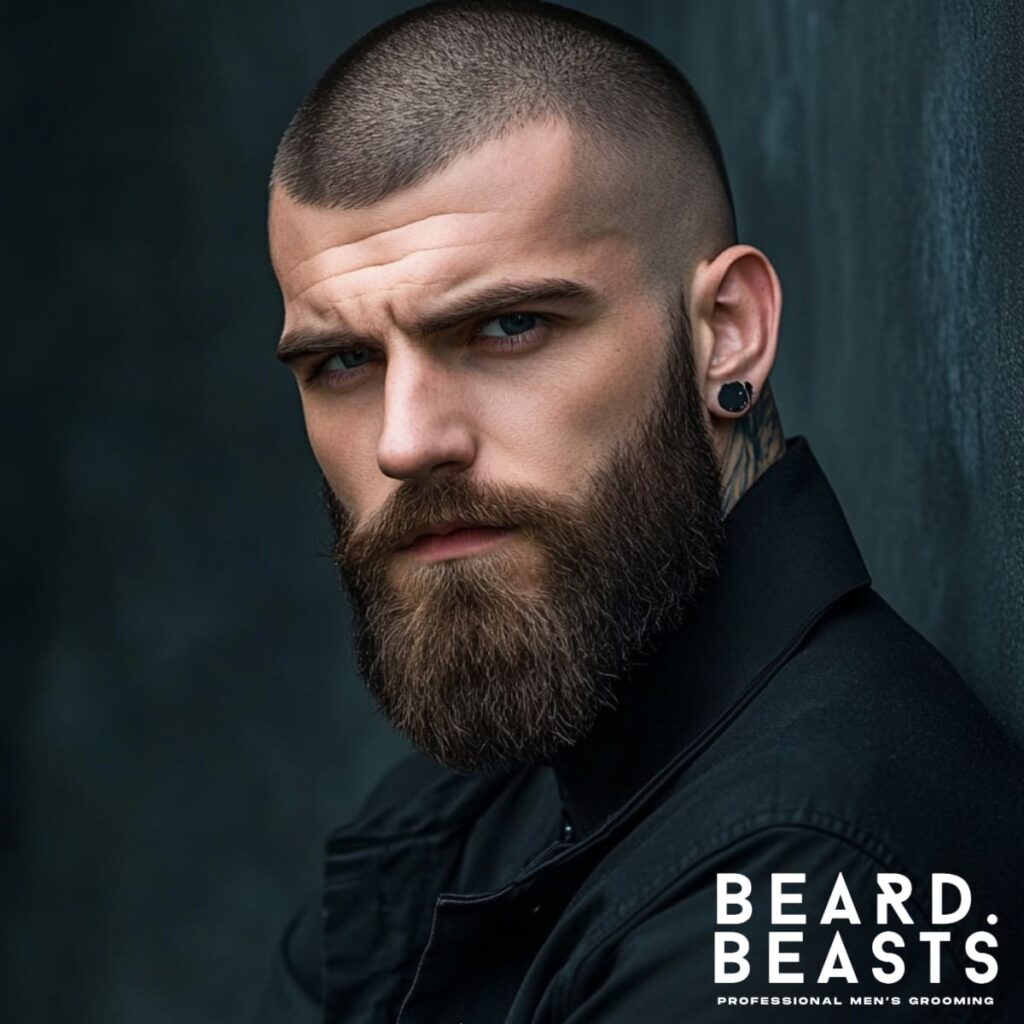
The classic full beard is a timeless symbol of masculinity and confidence. It’s characterized by consistent length throughout, typically ranging from 3-6 inches or longer, creating a full and dense covering of the jawline and chin. This style projects an image of ruggedness and timeless appeal.
- Who it suits best: This versatile style suits most face shapes, particularly oval and square faces, as it adds volume and definition. It’s also a good choice for men with strong jawlines who want to emphasize their features. Men with thick, even beard growth will find this style easier to achieve.
- How to achieve it: Let your beard grow naturally for several months, focusing on regular maintenance. Trim stray hairs and shape the neckline to create a clean look.
- 2025 Trend Angle: While always a classic, the full beard is seeing a resurgence in 2025, with a focus on natural texture and healthy shine.
- Variations: The full beard can be styled in various ways, from a neatly trimmed and shaped version to a more natural and untamed look.
Grooming Tips:
- Regular trimming is essential to maintain a neat shape and prevent beard split ends.
- Use a quality beard oil daily to keep the beard soft, hydrated, and manageable.
- Regular brushing helps distribute the oil evenly and tames flyaways.
The Classic Stubble Beard

Stubble offers a low-maintenance yet stylish option, projecting a rugged, understated look. It’s characterized by short facial hair, typically ranging from 1-3 millimeters in length, creating a subtle shadow on the face.
- Who it suits best: Suitable for almost any face shape, stubble is particularly good for men with patchy beard growth, as it provides a consistent and even appearance. It’s also a great option for those who prefer a minimal yet stylish look.
- How to achieve it: Use a beard trimmer with adjustable guards to maintain the desired length. Regular trimming (every 2-3 days) is crucial to prevent the stubble from becoming too long and unkempt.
- 2025 Trend Angle: Stubble remains a popular choice in 2025 due to its versatility and ease of maintenance. It’s a great option for those who want to experiment with facial hair without committing to a full beard.
- Variations: Stubble can be varied in length, from a light shadow to a more pronounced stubble.
Grooming Tips:
- Use a beard trimmer with adjustable guards to maintain the desired length.
- Regular trimming (every 2-3 days) is crucial to prevent the stubble from becoming too long and unkempt.
The Balbo Beard
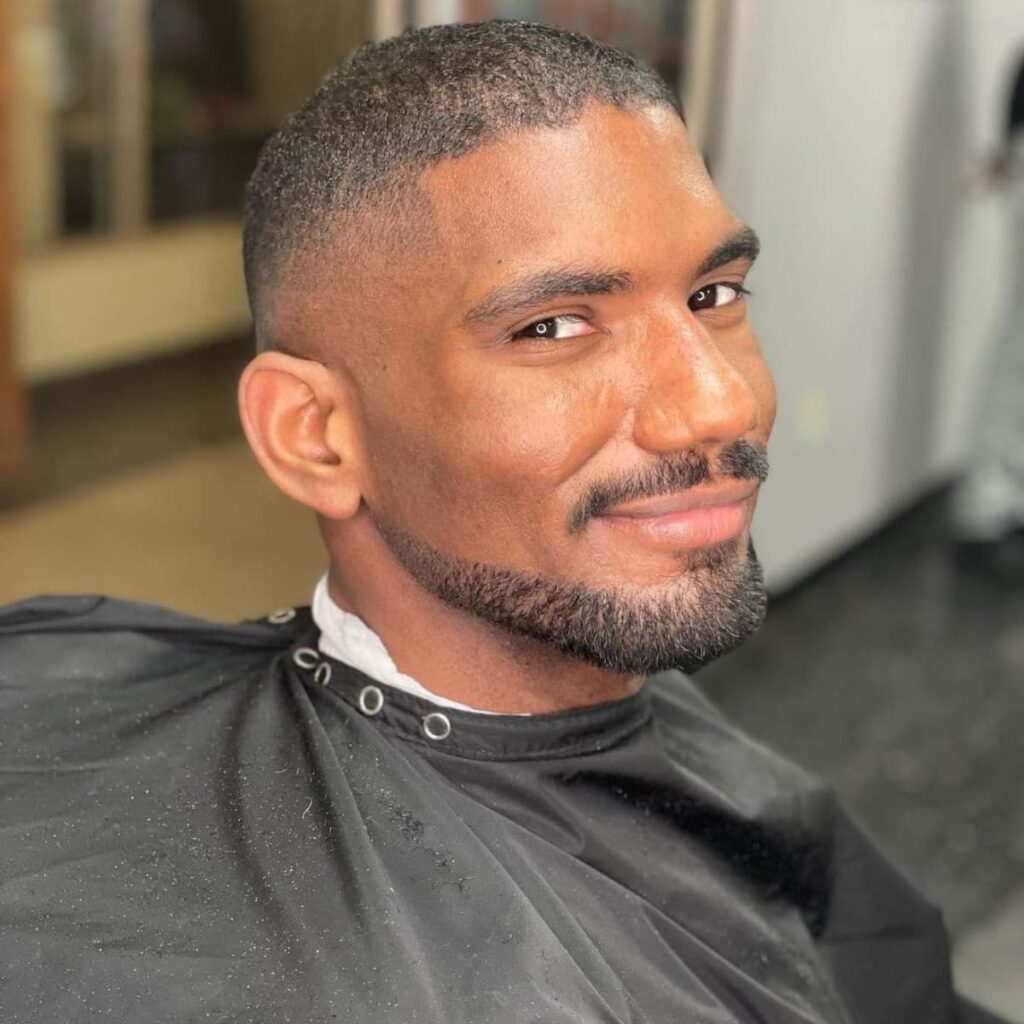
The Balbo beard is a sophisticated and distinctive style featuring a detached mustache and a short, pointed beard. The mustache is typically kept neatly trimmed and separate from the beard. The beard itself is short to medium in length, tapering to a point at the chin. This style projects an image of confidence and attention to detail.
- Who it suits best: This style is particularly flattering for men with narrow or angular faces, as it adds width to the jawline. It also works well for those who want a more structured and defined look.
- How to achieve it: A precision trimmer is essential for maintaining the sharp lines and distinct shape of the Balbo. Regular trimming is necessary to prevent the beard from becoming too bushy and losing its defined shape.
- 2025 Trend Angle: The Balbo continues to be a popular choice for those seeking a more modern and stylized beard. It offers a balance of classic and contemporary elements.
- Variations: The length of the beard and the style of the mustache can be varied to create different looks.
Grooming Tips:
- A precision trimmer is essential for maintaining the sharp lines and distinct shape of the Balbo.
- Regular trimming is necessary to prevent the beard from becoming too bushy and losing its defined shape.
- Beard oil can be used to keep the beard soft and manageable.
The Dapper Goatee

The goatee is a classic and versatile style that focuses attention on the chin and mustache area. It typically consists of hair grown on the chin and sometimes connected to a mustache, while the cheeks are clean-shaven. This style projects a clean, confident, and sometimes edgy image.
- Who it suits best: This style can add length to rounder faces and highlight strong jawlines. It’s also a good option for men with less dense facial hair growth on the cheeks.
- How to achieve it: Decide on the desired width of the goatee and shave the cheeks clean. Regularly trim the chin hair and mustache to maintain the shape.
- 2025 Trend Angle: The goatee has seen various iterations over the years, and in 2025, the trend leans towards a more refined and well-groomed version, often paired with a clean fade on the sides of the head.
- Variations: Variations include the classic goatee (chin hair only), the Van Dyke (with a disconnected mustache), and the extended goatee (with hair extending along the jawline).
Grooming Tips:
- Regular trimming is essential to maintain the desired shape and prevent the goatee from becoming unruly.
- A precision trimmer is helpful for creating clean lines.
The Corporate Beard
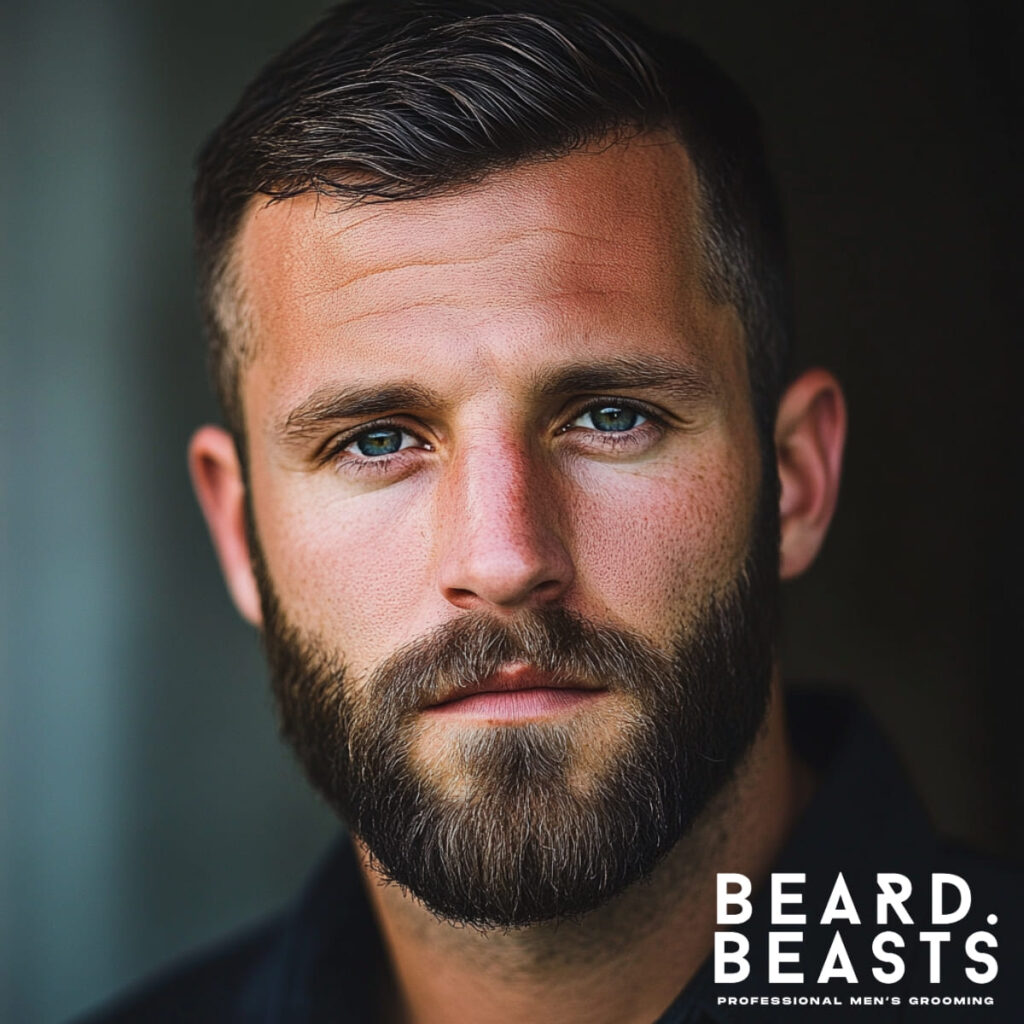
The corporate beard is a short, neat, and professional style suitable for workplace environments. It’s characterized by a closely trimmed beard, typically no longer than 1 inch in length, with clean lines along the cheeks and neckline. This style projects a polished, professional, and trustworthy image.
- Who it suits best: This style works well for heart-shaped and round faces, providing a polished and sophisticated look. It’s also a good choice for men in professional settings where a full beard might be considered too casual.
- How to achieve it: Use a beard trimmer with adjustable guards to maintain the short length and clean lines. Pay close attention to the cheek and neckline to ensure a neat appearance.
- 2025 Trend Angle: The corporate beard remains a staple in 2025, with an emphasis on precise trimming and a well-maintained appearance. It’s a timeless choice for professionals.
- Variations: The length can be slightly adjusted, but the key is to keep it short, neat, and well-defined.
Grooming Tips:
- Regular trimming is essential to maintain the short length and clean lines.
- A beard trimmer with adjustable guards is recommended.
- Beard balm can be used to tame flyaways and maintain a neat appearance.
The Classic Medium Beard

The classic medium beard strikes a balance between a short stubble and a full beard, offering a versatile and stylish look. It typically ranges from 2-4 inches in length. This style projects an image of balanced ruggedness and refinement.
- Who it suits best: This style is suitable for rectangular and oval faces. It offers a balance of ruggedness and refinement and is a good option for those who want a more noticeable beard without the commitment of a full beard.
- How to achieve it: Allow your beard to grow for several weeks, trimming stray hairs and shaping the neckline as needed. Regular maintenance trimming will help maintain the desired length and shape.
- 2025 Trend Angle: The medium beard remains a popular and versatile choice in 2025, with a focus on natural texture and healthy shine.
- Variations: The shape and fullness can be adjusted to suit individual preferences.
Grooming Tips:
- Regular trimming helps maintain the desired length and shape.
- Beard oil and balm can be used to keep the beard soft, hydrated, and manageable.
- Regular brushing helps distribute products and prevent tangles.
The Short Shaggy Beard

The short shaggy beard offers a relaxed and casual look with a touch of texture. It’s characterized by a slightly longer length than stubble, typically around 1/2 to 1 inch, with a less defined shape. This style projects an image of effortless cool and laid-back style.
- Who it suits best: This style is suitable for adding volume and texture, especially for those with uneven growth. It works well for most face shapes, particularly oval and square.
- How to achieve it: Allow your beard to grow to the desired length and then lightly trim stray hairs to maintain a general shape. Avoid over-trimming to preserve the shaggy texture.
- 2025 Trend Angle: The short shaggy beard continues to be a popular choice for those seeking a relaxed and low-maintenance style.
- Variations: The level of “shagginess” can be adjusted by varying the length and trimming technique.
Grooming Tips:
- Minimal trimming is required, focusing mainly on stray hairs and maintaining a general shape.
- Beard oil can be used to add a touch of control and prevent excessive frizz.
The Van Dyke

The Van Dyke is a classic and distinctive style featuring a pointed beard and a detached mustache. The beard is typically short to medium in length and comes to a distinct point at the chin. The mustache is usually styled with waxed tips. This style projects an image of sophistication, elegance, and a touch of old-world charm.
- Who it suits best: This style is suitable for oval and angular faces, adding a touch of elegance and drama.
- How to achieve it: A precision trimmer and beard wax are essential for maintaining the sharp lines and styled mustache. The beard is shaped into a point at the chin, and the mustache is styled with waxed tips.
- 2025 Trend Angle: The Van Dyke remains a timeless classic, often seen in more formal or stylized settings.
- Variations: The length of the beard and the style of the mustache can be varied to create different looks.
Grooming Tips:
- A precision trimmer and beard wax are essential for maintaining the sharp lines and styled mustache.
- Regular trimming is necessary to keep the beard and mustache in shape.
The Anchor Beard

The anchor beard is a bold and distinctive style that frames the jawline and points towards the chin. It features a combination of a chin strap and a short, pointed beard, resembling the shape of an anchor. This style projects an image of confidence, strength, and a touch of edginess.
- Who it suits best: This style is well-suited for square and diamond-shaped faces, adding definition and structure.
- How to achieve it: A precision trimmer is essential for maintaining the clean lines and distinct shape of the anchor. The chin strap and pointed beard are carefully shaped and trimmed.
- 2025 Trend Angle: The anchor beard continues to be a popular choice for those seeking a bold and distinctive look.
- Variations: The length and thickness of the chin strap and the length of the pointed beard can be varied.
Grooming Tips:
- A precision trimmer is essential for maintaining the clean lines and distinct shape of the anchor.
- Regular trimming is necessary to prevent the beard from becoming too bushy.
The Viking Beard
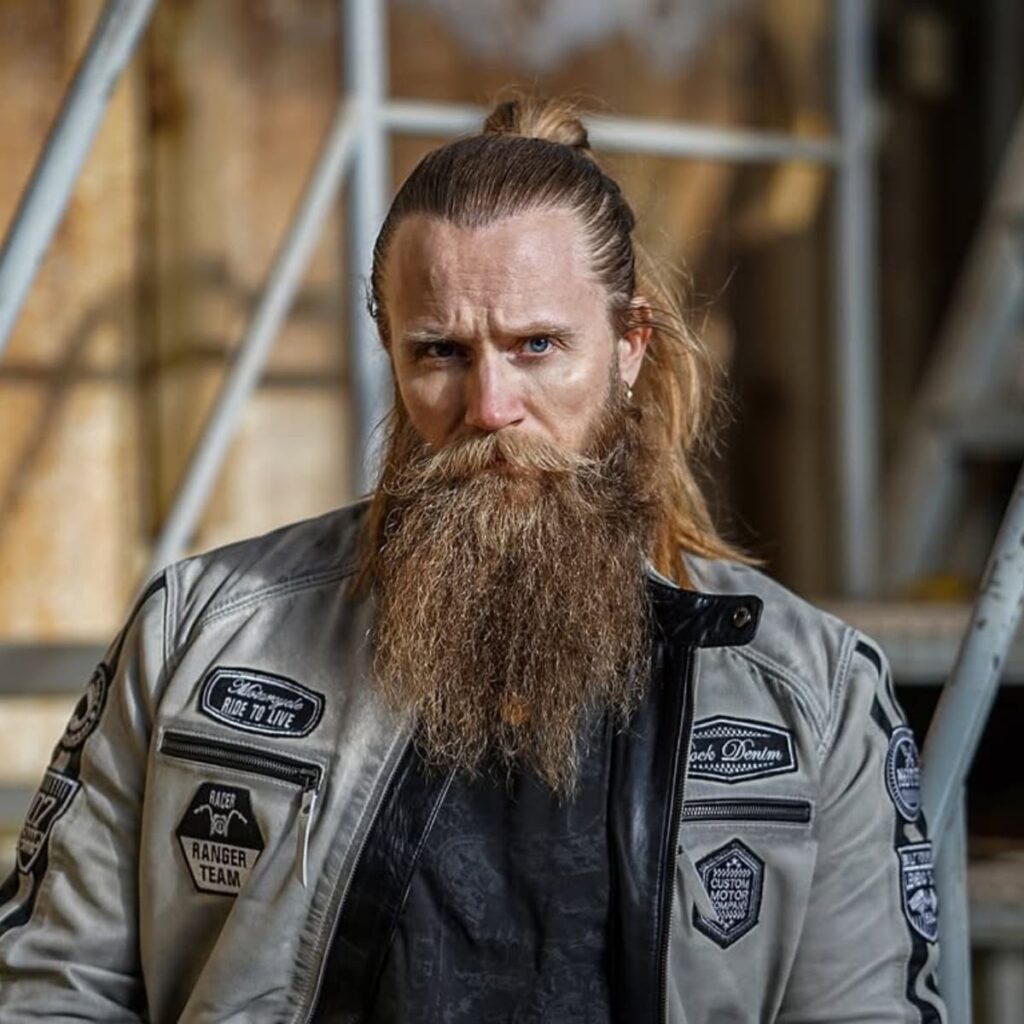
The Viking beard is a long, full, and rugged style that exudes power and masculinity. It’s characterized by significant length and volume, often reaching several inches or more. This style projects an image of strength, ruggedness, and a fearless spirit.
- Who it suits best: This style is suitable for those who are committed to growing a long beard and are willing to invest the time and effort in its maintenance. It can work for various face shapes but may overwhelm smaller faces.
- How to achieve it: Patience is key for growing a Viking beard. Allow your beard to grow naturally for an extended period, focusing on regular maintenance to keep it healthy.
- 2025 Trend Angle: While always a statement, the Viking beard in 2025 often incorporates braids, beads, or other decorative elements for a more personalized touch.
- Variations: The length, thickness, and styling (braids, knots, etc.) can be varied greatly.
Grooming Tips:
- Patience is key for growing a Viking beard.
- Regular oiling and conditioning are essential to keep the beard soft, hydrated, and manageable.
- Regular trimming helps remove split ends and maintain a healthy appearance.
While these top beard styles offer a great starting point, the key to finding your perfect beard lies in understanding how different styles complement your individual facial features. The next section will guide you through choosing the ideal beard for your face shape.
Choosing the Right Beard Style for Your Face Shape
Finding the best beard style depends on understanding your face shape and how different styles can enhance your features. This section provides a quick guide to help you find the perfect match.
Not sure what your face shape is? This helpful guide can help you identify it.
Style Recommendations by Face Shape:
- Oval: Classic Full Beard, Balbo, Short Stubble – These styles complement the natural balance of an oval face.
- Round: Goatee, Anchor Beard, short Corporate Beard – These styles add length and create a more defined jawline.
- Square: Short Shaggy Beard, Van Dyke, Classic Medium Beard – These styles soften the strong angles of a square face.
- Heart: Viking Beard, Classic Full Beard, Anchor Beard – These styles add fullness to the chin and jawline, balancing the wider forehead.
- Rectangle/Oblong: Shorter Full Beard with fuller sides, Short Shaggy Beard – These styles add width and prevent the face from appearing too long.
- Diamond: Van Dyke, well-maintained Stubble – These styles add balance to the narrow forehead and chin while highlighting the cheekbones.
Principles of Facial Balance:
The key is to create balance and proportion. Consider these principles:
- Add Width: Fuller sides create a wider appearance for narrow faces.
- Add Length: Length at the chin elongates round faces.
- Soften Angles: Texture and rounded shapes soften sharp features.
- Define Features: Clean lines accentuate existing features like a strong jawline.
Beyond Face Shape: Personal Style and Unique Features:
- Lifestyle: Consider your professional and social settings. Shorter, neater styles are suitable for corporate environments, while longer, more textured styles are appropriate for more casual settings.
- Adjustments: Modify styles to fit your specific features. For example, if you have a very long face, keeping the sides of your beard fuller can help create balance. If you have a weak chin, more volume in the chin area can create a stronger profile.
- Unique Features: A fuller beard can balance a prominent forehead, while a shorter style can minimize a less defined jawline.
Now that you have a better understanding of face shapes and suitable beard styles, let’s explore the essential grooming techniques to keep your chosen style looking its best.
Expert Beard Maintenance Tips
Maintaining a healthy and well-groomed beard requires consistent care and the right techniques. This section provides expert tips on beard maintenance, covering essential grooming products, proper washing and conditioning, trimming techniques, common problems, and a recommended daily routine.
Essential Grooming Products
Several key tools and products are essential for effective beard maintenance:
- Beard Comb: A comb helps detangle beard hair, preventing knots and distributing products evenly. Look for a beard comb with fine and coarse teeth to accommodate different beard lengths and textures.
- Beard Brush: A brush helps tame flyaways, smooth the beard, and exfoliate the skin underneath. Nylon bristle brushes are a popular choice for their ability to distribute natural oils.
- Beard Scissors: Sharp beard scissors are crucial for precise trimming of stray hairs and shaping the beard, especially in hard-to-reach areas.
- Beard Trimmer: An electric trimmer with adjustable guards allows for consistent trimming and shaping of the beard to the desired length.
Hydration and Conditioning
Hydrating and conditioning your beard is crucial for preventing dryness, itchiness, and flakiness.
- Beard Oil: Beard oil moisturizes both the beard hair and the underlying skin, keeping them soft and healthy. Apply daily, especially after showering, to lock in moisture.
- Beard Balm: Beard balm provides extra moisture and a light hold, helping to tame flyaways and shape the beard. It’s particularly useful for longer beards.
Washing Your Beard Properly
Regularly washing your beard removes dirt, sweat, and excess oil. However, using regular shampoo can strip natural oils, leading to dryness and damage.
- Use a beard-specific wash formulated to gently clean without stripping natural oils.
- Wash your beard 2-3 times a week, adjusting the frequency based on your lifestyle and activity level.
Regular Trimming
Regular trimming is essential for maintaining the shape and health of your beard.
- Trim stray hairs regularly to keep the beard looking neat and intentional.
- Pay close attention to your cheek lines and neckline for a sharp, defined look. Use a trimmer to establish the lines and scissors for finer adjustments.
Common Beard Problems
Let’s take a look at the most common problems with facial hair.
Beard Dandruff (Beardruff)
This is caused by dry skin under the beard. It manifests as white flakes and can be itchy.
- Solutions:
- Hydration: Use beard oil daily to moisturize the skin.
- Exfoliation: Gently exfoliate the skin under your beard 1-2 times a week with a beard brush or a gentle scrub.
- Proper Washing: Avoid using harsh shampoos that strip natural oils. Use a beard-specific wash.
Ingrown Hairs
Ingrown beard hairs occur when hairs curl back and grow into the skin, causing red bumps and irritation.
- Solutions:
- Exfoliation: Regular exfoliation helps prevent ingrown hairs by removing dead skin cells that can trap hairs.
- Proper Trimming Technique: Trim in the direction of hair growth. Avoid trimming too close to the skin.
- Warm Compress: Apply a warm compress to the affected area to help loosen the trapped hair.
- Tweezers (Use with Caution): If the ingrown hair is visible, you can carefully try to remove it with sterilized tweezers. Be gentle to avoid further irritation or scarring.
Split Ends
Just like the hair on your head, beard hair can develop split ends, making the beard look frizzy and unkempt.
- Solutions:
- Regular Trimming: Trimming split ends is the most effective way to get rid of them.
- Hydration and Conditioning: Using beard oil and balm helps prevent split ends by keeping the hair hydrated and strong.
- Avoid Over-Washing: Washing your beard too frequently can strip natural oils and contribute to split ends.
Beard Itch
This is very common, especially in the early stages of beard growth. It is mostly caused by dry skin.
- Solutions:
- Hydration: Use beard oil to moisturize the skin underneath.
- Proper Washing: Use a beard-specific wash.
- Beard Balm: Beard balm can help soothe the itch and soften the beard.
By following these expert beard maintenance tips, you can keep your beard looking and feeling its best. Consistent care and the right techniques are essential for achieving a healthy, well-groomed beard that complements your personal style.
Wrapping It Up: Your Path to the Best Beard Styles
A well-maintained beard is more than just facial hair; it’s a statement of personal style and a reflection of your commitment to self-care. By understanding your face shape, choosing a complementary style, and establishing a consistent grooming routine, you can achieve a beard that enhances your appearance and boosts your confidence.
Remember these key principles for beard success:
- Style Selection: Prioritize choosing a style that complements your face shape for the most flattering results.
- Essential Grooming: Invest in quality grooming tools and products to maintain a healthy and well-groomed beard.
- Consistent Care: Establish a regular grooming routine that includes washing, hydrating, conditioning, and trimming.




